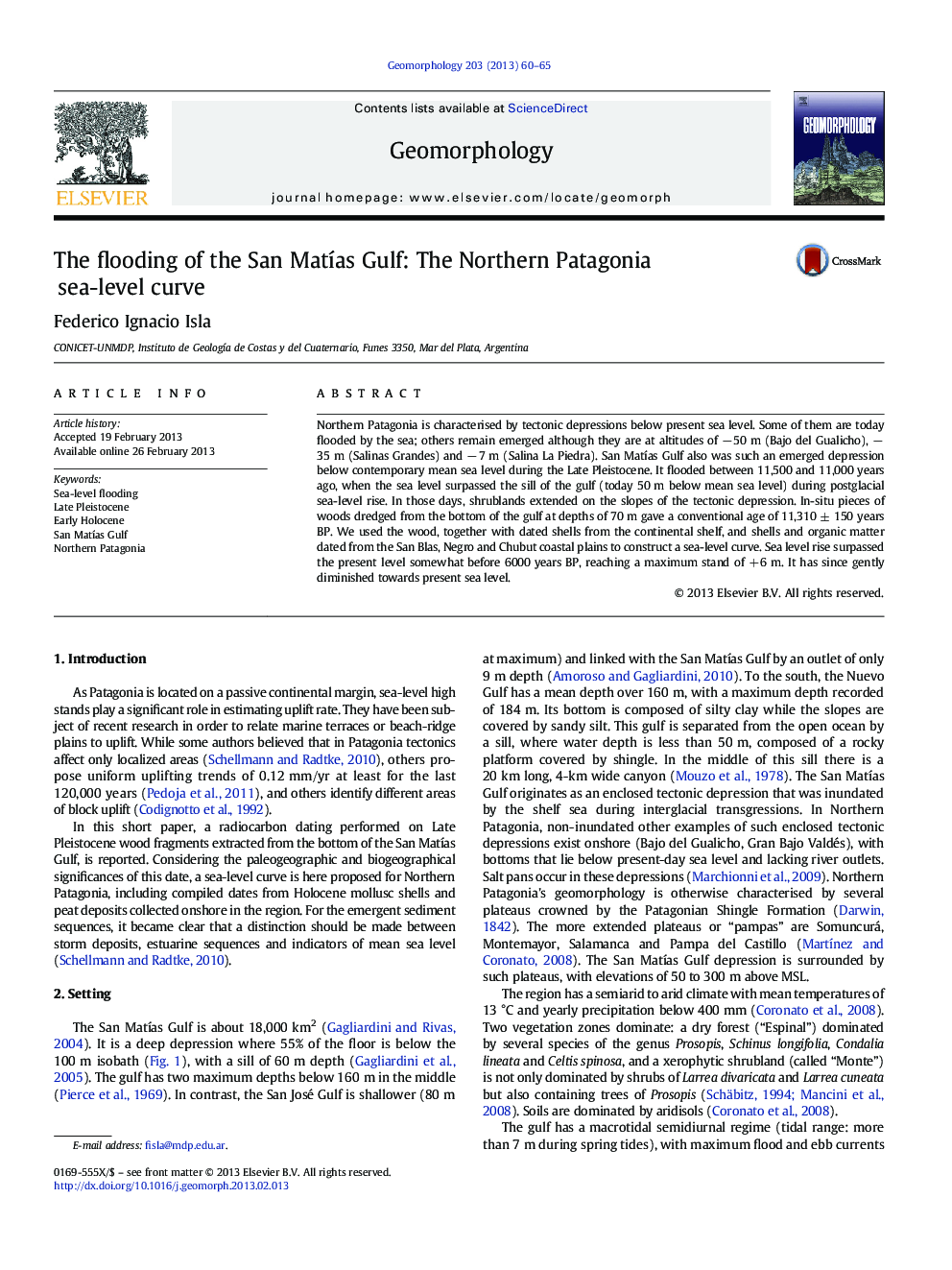| Article ID | Journal | Published Year | Pages | File Type |
|---|---|---|---|---|
| 6432821 | Geomorphology | 2013 | 6 Pages |
Northern Patagonia is characterised by tectonic depressions below present sea level. Some of them are today flooded by the sea; others remain emerged although they are at altitudes of â 50 m (Bajo del Gualicho), â 35 m (Salinas Grandes) and â 7 m (Salina La Piedra). San MatÃas Gulf also was such an emerged depression below contemporary mean sea level during the Late Pleistocene. It flooded between 11,500 and 11,000 years ago, when the sea level surpassed the sill of the gulf (today 50 m below mean sea level) during postglacial sea-level rise. In those days, shrublands extended on the slopes of the tectonic depression. In-situ pieces of woods dredged from the bottom of the gulf at depths of 70 m gave a conventional age of 11,310 ± 150 years BP. We used the wood, together with dated shells from the continental shelf, and shells and organic matter dated from the San Blas, Negro and Chubut coastal plains to construct a sea-level curve. Sea level rise surpassed the present level somewhat before 6000 years BP, reaching a maximum stand of + 6 m. It has since gently diminished towards present sea level.
⺠Patagonia is characterised by emerged tectonic depressions below mean sea level. ⺠Some depressions were flooded when the sea-level rise surpassed their sills. ⺠In situ woods from the bottom are indicating its flooding about 11,000 years ago. ⺠The sea level has been dropping in the last 6000 years in Northern Patagonia.
